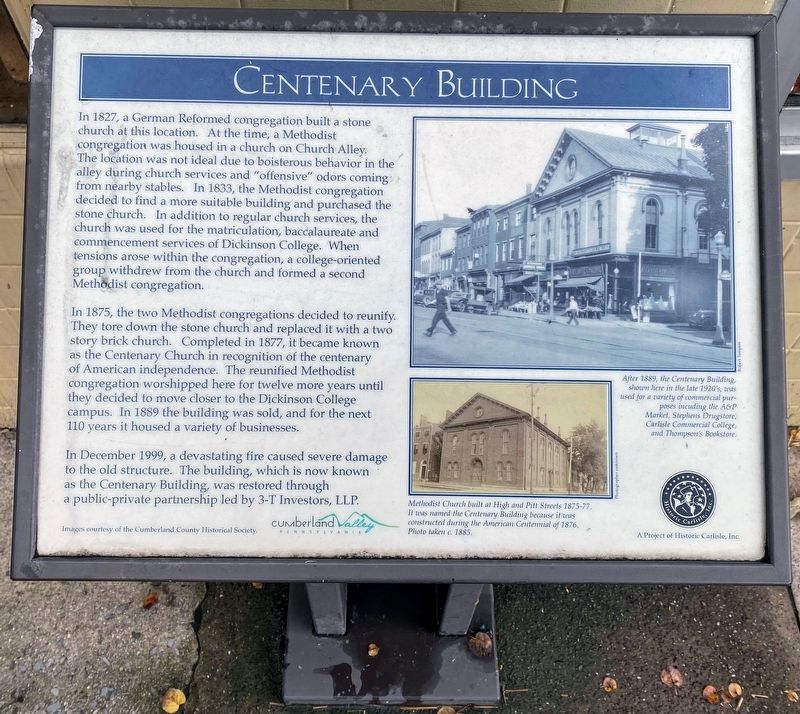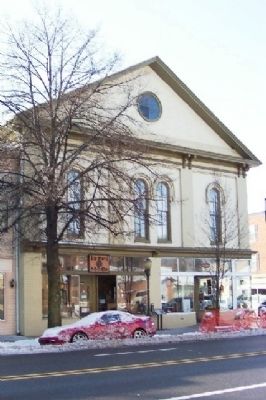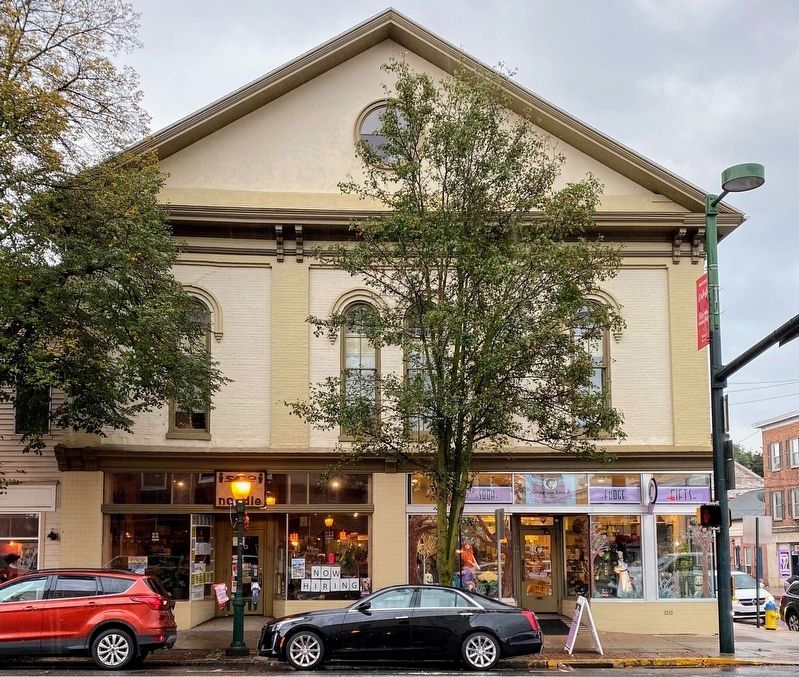Carlisle in Cumberland County, Pennsylvania — The American Northeast (Mid-Atlantic)
Centenary Building
Walking Tour Stop 14
In 1875, the two Methodist congregations decided to reunify. They tore down the stone church and replaced it with a two story brick church. Completed in 1877, it became known as the Centenary Church in recognition of the centenary of American Independence. The reunified Methodist congregation worshipped here for twelve more years until they decided to move closer to the Dickinson College campus. In 1889 the building was sold, and for the next 110 years it housed a variety of businesses.
In December 1999, a devastating fire caused severe damage to the old structure. The building, which is now known as the Centenary Building, was restored through a public-private partnership led by 3-T Investors, LLP.
Images courtesy of the Cumberland County Historical Society.
Erected by Historic Carlisle, Inc.
Topics. This historical marker is listed in these topic lists: Churches & Religion • Education • Industry & Commerce. A significant historical month for this entry is December 1999.
Location. 40° 12.094′ N, 77° 11.476′ W. Marker is in Carlisle, Pennsylvania, in Cumberland County. Marker is at the intersection of High Street (U.S. 11) and Pitt Street, on the right when traveling east on High Street. Touch for map. Marker is at or near this postal address: 54 West High Street, Carlisle PA 17013, United States of America. Touch for directions.
Other nearby markers. At least 8 other markers are within walking distance of this marker. Hot-Chee Dogs (a few steps from this marker); Carlisle's 250th Anniversary Mural (a few steps from this marker); Cumberland County Historical Society & Hamilton Library Association (within shouting distance of this marker); The Carlisle Theatre (within shouting distance of this marker); Prelude to Gettysburg (within shouting distance of this marker); Shell and Be Damned (within shouting distance of this marker); James Wilson (within shouting distance of this marker); The High Street Train Stations (within shouting distance of this marker). Touch for a list and map of all markers in Carlisle.
Credits. This page was last revised on January 16, 2022. It was originally submitted on February 12, 2009, by William Fischer, Jr. of Scranton, Pennsylvania. This page has been viewed 1,160 times since then and 54 times this year. Photos: 1. submitted on December 19, 2021, by Shane Oliver of Richmond, Virginia. 2. submitted on February 12, 2009, by William Fischer, Jr. of Scranton, Pennsylvania. 3. submitted on December 19, 2021, by Shane Oliver of Richmond, Virginia. • Craig Swain was the editor who published this page.


